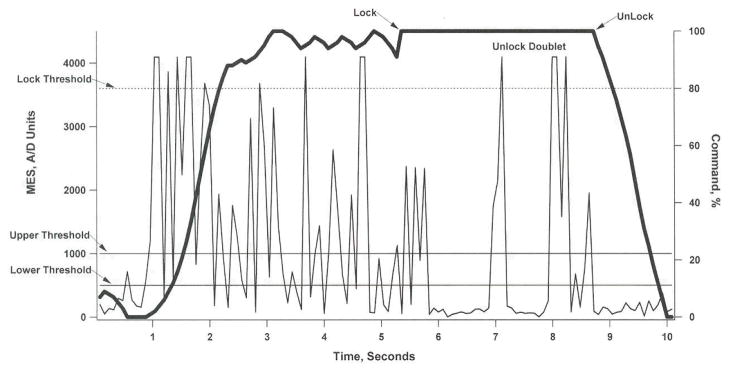Figure 2.
This graph shows the relationship between the recorded ECRL EMG (thin line, left axis) and stimulus command (thick line, right axis) as a subject closes their hand (1–5 seconds), locks their hand (6–7 seconds), unlocks their hand (7–9 seconds), and opens their hand (9–10 seconds). The recorded EMG is filtered by an adaptive step-size filter to produce the proportional command signal used to control grasp opening (0% command) and grasp closing (100% command). Between the lower and upper thresholds, the input to the adaptive filter is proportional to the level of the EMG. With each successive sample in which the change in signal is in the same direction as the previous sample, the allowable step size is increased. When the direction changes, the step size returns to a minimum value. When the command is above the “lock threshold” for 2.5 seconds, the command is locked at the 100% command level. To return to active control, the user generates 2 EMG twitches with a 1-second interval between them. When the unlock signal is generated, the command gradually returns to complete active control over a period of 1 second in order to avoid abrupt changes in command level. MES, myoelecctic signal; A/D, analog to digital.

